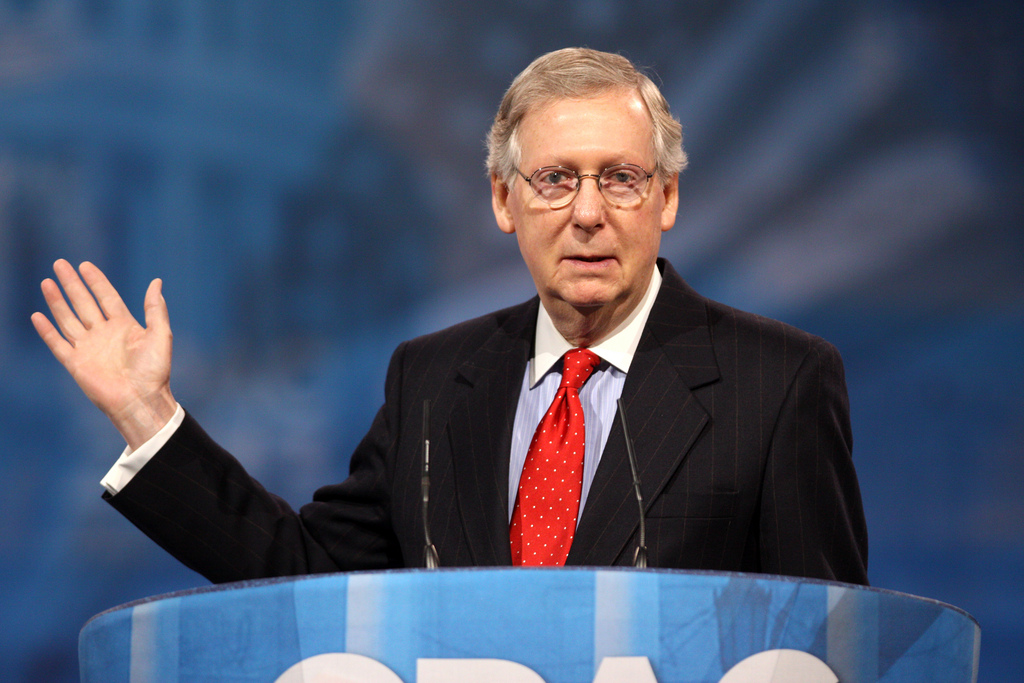Abortion rights, women of color, and LGBTQIA+ people are under attack. Pledge to join us in fighting for gender justice.
Trump Tax Principles: A Plan for the Wealthy Few, Not Women and Families

 Last week, President Donald Trump released his principles for tax reform and it turns out he’s like every other Republican before him—slash taxes for the wealthy few and big corporations under the guise of growing the economy. The fallacy that tax cuts for the rich and corporations grow the economy has been the conservative talking point since Ronald Reagan first touted trickle-down economics, and has been widely discredited. But not only does Trump stick to the same failed playbook of the past, his principles appear to lack some of most important tax strategies that help working families. For example, his principles do not mention expanding the Earned Income Tax Credit, an effective anti-poverty program which would greatly benefit working women and families. Although there are media reports that he is considering improvements to the Child and Dependent Care Tax Credit, those potential improvements alone do not mitigate the other troubling aspects of his tax plan. For instance, Trump proposes reducing the corporate tax rate by 60 percent and getting rid of the estate tax, which impacts only the richest 0.2 percent of estates (including his own estate). Coupled with his skinny budget, which guts crucial programs that provide basic living standards to low-income Americans, what emerges is a clear picture of Trump’s economic policy—giving big payoffs for the wealthy few and big corporations, while pulling the rug out from everyday women and families.
Last week, President Donald Trump released his principles for tax reform and it turns out he’s like every other Republican before him—slash taxes for the wealthy few and big corporations under the guise of growing the economy. The fallacy that tax cuts for the rich and corporations grow the economy has been the conservative talking point since Ronald Reagan first touted trickle-down economics, and has been widely discredited. But not only does Trump stick to the same failed playbook of the past, his principles appear to lack some of most important tax strategies that help working families. For example, his principles do not mention expanding the Earned Income Tax Credit, an effective anti-poverty program which would greatly benefit working women and families. Although there are media reports that he is considering improvements to the Child and Dependent Care Tax Credit, those potential improvements alone do not mitigate the other troubling aspects of his tax plan. For instance, Trump proposes reducing the corporate tax rate by 60 percent and getting rid of the estate tax, which impacts only the richest 0.2 percent of estates (including his own estate). Coupled with his skinny budget, which guts crucial programs that provide basic living standards to low-income Americans, what emerges is a clear picture of Trump’s economic policy—giving big payoffs for the wealthy few and big corporations, while pulling the rug out from everyday women and families.
Trump’s tax plan would be a massive giveaway to wealthy Americans and big corporations. He proposes slashing the top marginal individual tax rate to 35% and consolidating the current seven tax brackets into three. He also proposes slashing the corporate tax rate to an astoundingly low 15 percent. While he claims that such tax cuts would grow the economy and “create 25 million new jobs over the next decade,” this couldn’t be further from the truth. A Congressional Research Service analysis of the top tax rates since 1945 found little or no association between reducing taxes on the wealthy and increased savings, investment, or productive growth. A review of research by the Center on Budget and Policy Priorities of the impacts of a 1993 tax hike and the 2001 tax cut also revealed that job creation and economic growth were actually stronger in the years after the 1993 tax increases than in the years following the 2001 tax cuts.
Instead of creating jobs or economic growth, tax cuts for the rich just make the rich richer. An analysis of OECD countries found that there was no correlation between the top tax rates and economic growth, but there was a correlation between lower top tax rates and greater income inequality. The earlier CRS study also found that cutting the top tax rate concentrates wealth at the top of the income spectrum.
While the wealthy few and already profitable corporations would reap large benefits from Trump’s tax plan, it’s not clear how everyday women and families benefit. The details of the tax plan focus on the wealthy few, but there is no information that can help families figure out if this will be good for them. Although he proposes consolidating tax brackets, there’s no information about the income cutoffs for those brackets, making it impossible for families to know the tax rate they might pay. And he says he will double the standard deduction, but doesn’t say whether he will stick with his campaign plan to eliminate the head of household filing status and personal exemptions, which would predominantly hurt single parents and families with more than two children.
While women and families likely won’t get a fair shake from Trump’s tax plan, it’s not their only worry. Trump’s tax plan comes on the heels of his draconian skinny budget, which would cut programs that provide a basic living standard to low-income families. His skinny budget proposes eliminating heating assistance for people in poverty, funding for meals for seniors, and housing assistance. These cuts will affect women the most, potentially creating an even greater poverty gap between men and women. The Tax Policy Center found that cutting the corporate income tax to 15 percent would cost $2.4 trillion 10 years — and that number skyrockets to $4 trillion if the 15 percent rate applies to pass-through income. Unless the White House plans to simply increase the deficit, these tax cuts must be paid for somehow—meaning all the critical programs that provide a basic living standard for women and families—including Medicaid, SNAP (food stamps), and more—are threatened.
Donald Trump’s desire to give huge tax cuts to wealthy people like himself and take away critical programs that are lifelines for many women and families flies in the face of what his voters wanted and is a recipe for economic disaster (look at what happened in Kansas). And Trump refuses to release his tax returns, preventing Americans from knowing if he’s trying to cut their tax bill or just his own.
Our tax policies should help the most vulnerable Americans by improving family tax credits and raising enough revenue for programs and services that support struggling families, rather than giving more tax cuts and loopholes to the wealthy and corporations. To have a tax plan that actually helps working women and families, Trump should consider abiding by the following principles:
- Don’t give more tax cuts for the wealthy and big corporations. They should pay their fair share in order to have a tax system that works for all of us.
- Tax policies should help the most vulnerable now. Tax reform should preserve — and improve — tax credits like the Earned Income Tax Credit, Child Tax Credit, and Child and Dependent Care Tax Credit that help families make ends meet.
- Support progressive tax reforms that would raise needed revenue— and expand opportunity for a stronger future for everyone. Every year, special interest tax loopholes cost the federal government billions of dollars. That’s money that could be used to support struggling families and give them a chance for a better life.




